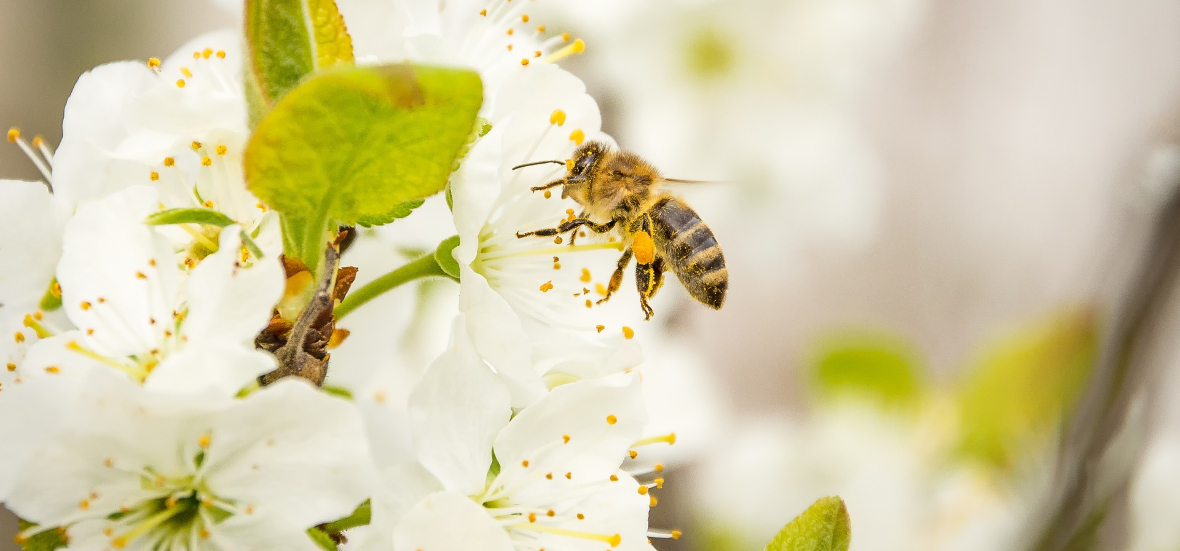
[caption id="attachment_171894" align="aligncenter" width="1180"] Image: Pixabay.com (2017), CC0/PD[/caption]
Image: Pixabay.com (2017), CC0/PD[/caption]
Saint Rita of Cascia, 1381–1457, is remembered for many things including a stigmata of a thorn wounding her forehead. She is a patron of desperate causes — and the current pandemic is a cause worthy of her intercession! — and for the Catholic gardener, she has an association with bees.
In the parish church of Laarne, near Ghent, Belgium, there is a statue of Saint Rita in which several bees are featured. This depiction originates from the story of albino bees, a unique gift from God, which drew near Saint Rita as an infant and reappeared after her death.
On the day after her Baptism, her family noticed a swarm of bees flying around her as she slept. The bees were unusual because they were white in color, and they peacefully entered and exited the baby’s mouth without causing her any harm. Instead of being alarmed for her safety, her family was mystified by this sight. It is said that one of the farmers witnessing the event, whose arm had been deeply cut by a scythe, passed the injured arm over the child to shoo the bees away and his arm was miraculously healed.
Nearly two hundred years after her death, at the monastery Saint Mary Magdalene of Cascia, where Saint Rita had lived, the white bees appeared again. Then, as now, they come out of the wall during Holy Week — which we know varies from year to year — and remain about the gardens until Saint Rita’s feast day of May 22 when they return to the wall for their mystical hibernation until the next year. During more recent centuries the bees are no longer white, appearing as any other bee in yellow but without a stinger.
There is another miraculous story of this saint set near the end of her life. When Saint Rita was bedridden at her convent, a cousin visited her and asked the saint if she desired anything from her old home in Roccaporrena, Italy. Saint Rita responded by asking for a rose and a fig from the garden. It was January, and her cousin did not expect to find anything at the garden. However, when she went to the homestead, a single blooming rose was found in the garden as well as a fully ripened and edible fig. Her cousin brought the rose and fig back to Saint Rita at the convent. Legend has it that this rose bush is still alive today and is often in bloom.
[tweet "The mysterious connection between #StRitaOfCascia, gardening, and bees - by @realym"]
Copyright 2020 Margaret Rose Realy, Obl. OSB
Excerpt from Margaret Rose Realy, A Catholic Gardener’s Spiritual Almanac (Notre Dame: Ave Maria Press, 2015), 98-99.
About the Author

Margaret Rose Realy, Obl. OSB
Margaret Rose Realy, Obl. OSB lives an eremitic life and authored A Garden Catechism, A Catholic Gardener’s Spiritual Almanac, A Garden of Visible Prayer: Creating a Personal Sacred Space One Step at a Time, and Cultivating God’s Garden through Lent. An award-winning author, Margaret has a master’s degree in communications, is a Certified Greenhouse Grower, Master Gardener, liturgical garden consultant, and workshop/retreat leader.


.png?width=1806&height=731&name=CatholicMom_hcfm_logo1_pos_871c_2728c%20(002).png)
Comments